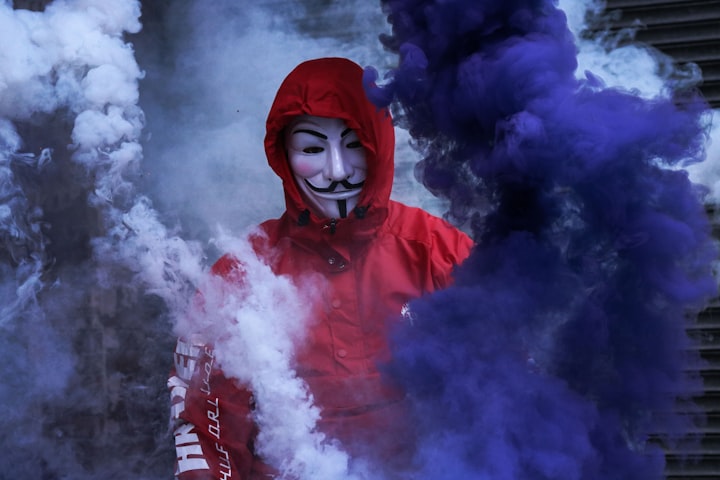
Henceforth, I will share a true story about an anonymous Army doctor and his life-changing act of kindness towards me.
This story also serves as a reminder concerning a vaccine that, for many virologists, still has the potential to, if not protect us against infection from SARS-CoV-2, at least to provide strategic support and guidance for the immune system in cases more genetically susceptible to life-threatening disease.
In the Army, you have to get inoculated
Back in May 2006, I started a military career. Before enlistment, there was an army fitness test.
I had to travel to Lisbon to undergo the tests. I went by train, but there was a delay, and I arrived late to the testing army grounds.
Everybody was already doing push-ups when I presented myself to the Officer in charge. A 6'5-tall army doctor.
He looked down on me, and I thought I was done for and would be sent back home for showing up late. While in the Army, you can't ever be late!
Then, he smiled and pointed to the gravel next to him:
- Drop down and give me 60 in under 60 seconds, and I might forget you're late.
Thus, while everybody else was being physically tested on soft exercise mats, I did my 60 pushups on the gritted pavement, and I had a smile on my face all the time, as I knew the good doctor had given me a chance to stay in the race.
Afterward, I went through a battery of psychological and medical exams. On Day 1, a gave me a full assessment - a top-to-toe check-up - as everything gets tested: urine, hearing, eyesight, color perception, lung capacity, body mass, etc.
On Day 2, I remember standing in line at the door of the medical office. When it was my turn to take a shot, I went in and saw the same tall figure, but he had changed his battledress for a doctor's gown.
The good doctor smiled again and told me to sit down and roll up my sleeve. He remembered and was happy to see me at the final stage.
Gently smiling and giving me an almost childish wink, the physician reassured me with words that have lingered on my mind for years:
- Don't worry, you made it through the grit, and this vaccine is good for everything, and it might one day save your life!
Then he inoculated me with the Bacillus Calmette–Guérin (BCG) vaccine under National Army Regulations. I thanked him and went out the door, ready to serve my country for the next seven years.
He couldn't have foreseen it, but probably he did two good deeds back then. He gave me a second chance to serve my country, and that made me a better human, and by doing so, I had the opportunity to be vaccinated with BCG, and during a COVID-19 pandemic, this may have saved my life, as I haven't been infected so far.
Can a century-old vaccine be a game-changer?
Early this year, several studies investigated if BCG could prevent COVID-19 — almost 100 years after being used in humans as a vaccine for tuberculosis.
On March 23, an essay — Can a century-old TB vaccine steel the immune system against the new coronavirus? — caught the public eye. A team of experts led by Mihai Netea, an infectious disease specialist at Radboud university medical center, raised the question while claiming that BCG could “defy textbook knowledge of how immunity works.”
When a pathogen enters the body, white blood cells of the “innate” arm of the immune system attack it first; they may handle up to 99% of infections. If these cells fail, they call in the “adaptive” immune system, and T cells and antibody-producing B cells start to divide to join the fight.
Key to this is that certain T cells or antibodies are specific to the pathogen; their presence is amplified the most. Once the pathogen is eliminated, a small portion of these pathogen-specific cells transforms into memory cells that speed up T cell and B cell production the next time the same pathogen attacks. Vaccines are based on this mechanism of immunity.
The innate immune system, composed of white blood cells such as macrophages, natural killer cells, and neutrophils, was supposed to have no such memory. But Netea’s team discovered that BCG, which can remain alive in the human skin for up to several months, triggers not only Mycobacterium-specific memory B and T cells but also stimulates the innate blood cells for a prolonged period.
“Trained immunity,” Netea and colleagues call it. In a randomized placebo-controlled study published in 2018, the team showed that BCG vaccination protects against experimental infection with a weakened form of the yellow fever virus, which is used as a vaccine.
How can this training be decisive in controlling the virus?
Are interferons a quick reaction force against infection?
To answer that question, first, we must go beyond the conventional definition of COVID-19 as an infectious disease caused by severe acute respiratory syndrome, as science showed that the virus could attack Its human host in ways far worse than other respiratory syndromes.
Even in the early stages of the pandemic, virologists could not explain how the human body first responders to infection: type I Interferons (alpha and beta) were not properly activated in severe cases.
Recent studies explain how this was happening because of individual genetic flaws in the immune system or rogue antibodies, clouded by the fog of war, attacking the interferon itself.
Over 14% of severe COVID-19 cases account for the immune system anomaly.
Interferons
Any of a group of heat-stable soluble basic antiviral glycoprotein cytokines of low molecular weight that are produced by cells exposed usually to the action of a virus, sometimes to the action of another intracellular parasite (such as a bacterium), or experimentally to the action of some chemicals.
Every cell in our body produces type I interferons. When a pathogen invades it, interferons should immediately launch a counter-attack by producing specific proteins, while flaring an all-around distress call, so that other cells may raise their defenses.
Hence, to win the fight against COVID-19 in severe cases, clearing this fog of war can make the difference between life or death. However, to achieve this and push back an attack strong in numbers and vicious like the Persian horde of Xerxes I, our immune system has to launch a call-to-arms and train interferons capable of targeting pathogens before chaos sets in.
The goal is to avert a flawed response that will only cause more havoc. Therefore, interferons have to contain the rampaging infection by enforcing a coordinated defense, like the Spartans of king Leonidas did in the Thermopylae.

The life-threatening “cytokine storm” under the fog of war.
The COVID-19 crisis is our Battle of the Thermopylae, and to regain control of the battlefield, the immune system should not, as far as possible, randomly trigger a full-scale overwhelming response leading to a “cytokine storm.”
What are cytokines?
Cytokines are glycoproteins that synchronize immune system responses, and their concentrations vary during the course of a disease. Cytokines can have either pro- or anti-inflammatory effects, and these effects can be contextual. Cytokines are classified according to their cell of origin or their mechanism of action.
Definition of “cytokine storm”
The elevated circulating levels of cytokines associated with a variety of infectious and immune-mediated conditions are frequently termed a cytokine storm.
The term “cytokine storm” emerged during the SARS epidemic caused by SARS-CoV-1 to explain the hyperactive immune response characterized by the release of cytokines in levels harmful to host cells, leading to an abnormal and utterly dysregulated inflammatory response.
Does BCG help clear the fog of war during a “cytokine storm”?
BCG inoculation is safe for everyone, and doses are non-expensive to produce, thus allowing for mass-production. The vaccine works as an immune system modulator, protecting against harmful “cytokine storms” and training type I interferon like a drill-sergeant in boot camp.
Another essay — SARS‐CoV‐2 infection in India bucks the trend: Trained innate immunity? — debates how a BCG vaccinated population can display trained innate immunity against novel pathogens, providing an important protective factor in pandemics.
BCG can also be a vector for the development of novel recombinant vaccines:
Every cloud has a silver lining.
Looking back, even if that Army doctor could never have foretold the rise of the COVID-19 pandemic crisis, he was foreseeing recent scientific breakthroughs regarding BCG.
While reading an essay by Meredith Wadman, I was so grateful for that vaccine, taking into account that “94% of the patients with interferon-attacking antibodies were male, thus explaining why men face a higher risk of severe disease”.
Today, I strongly believe that I am in good health thanks to an army doctor's small act of kindness and his old vaccine.
Thanks, Doc!
Sometimes it takes only one act of kindness and caring to change a person’s life. – Jackie Chan
_________________________
Thanks for reading this article and crossing the labyrinth with me. Please feel free to come back at any time and pick up another thread from my Vocal book of content. Till next time, cheers!
-Rui
About the Creator
Rui Alves
Hi, I'm Rui Alves, a teacher, army veteran & digital pathfinder. Author, alchemist of sound & Gen-AI artist.






Comments
There are no comments for this story
Be the first to respond and start the conversation.